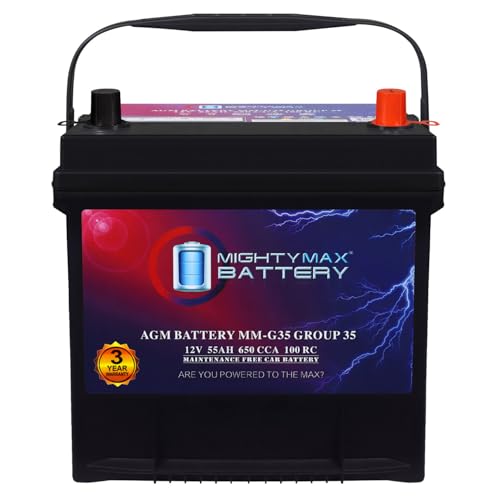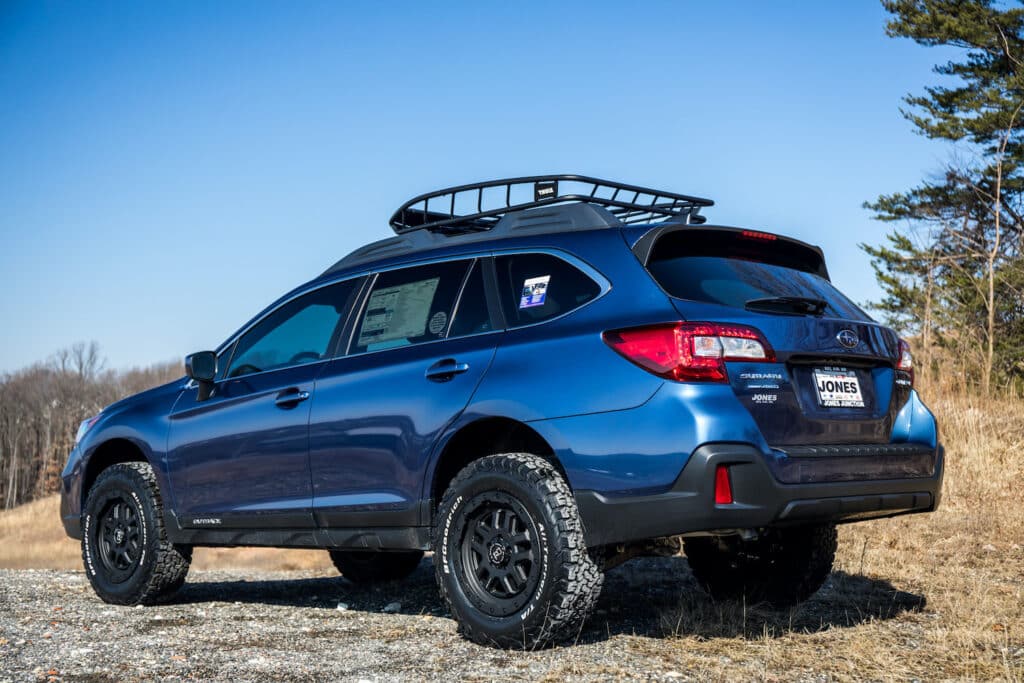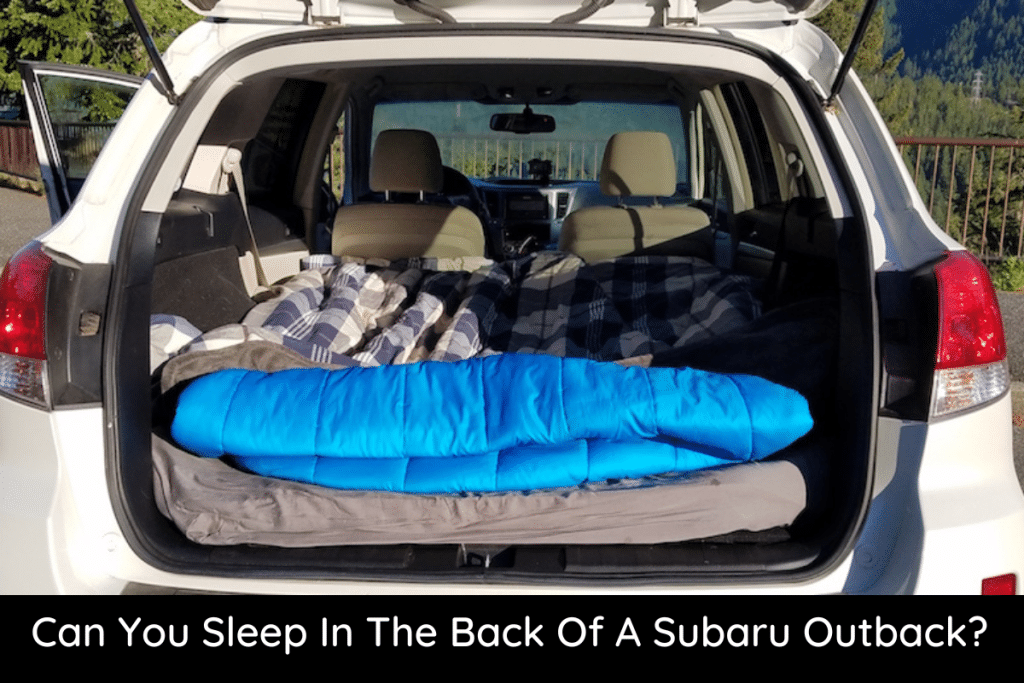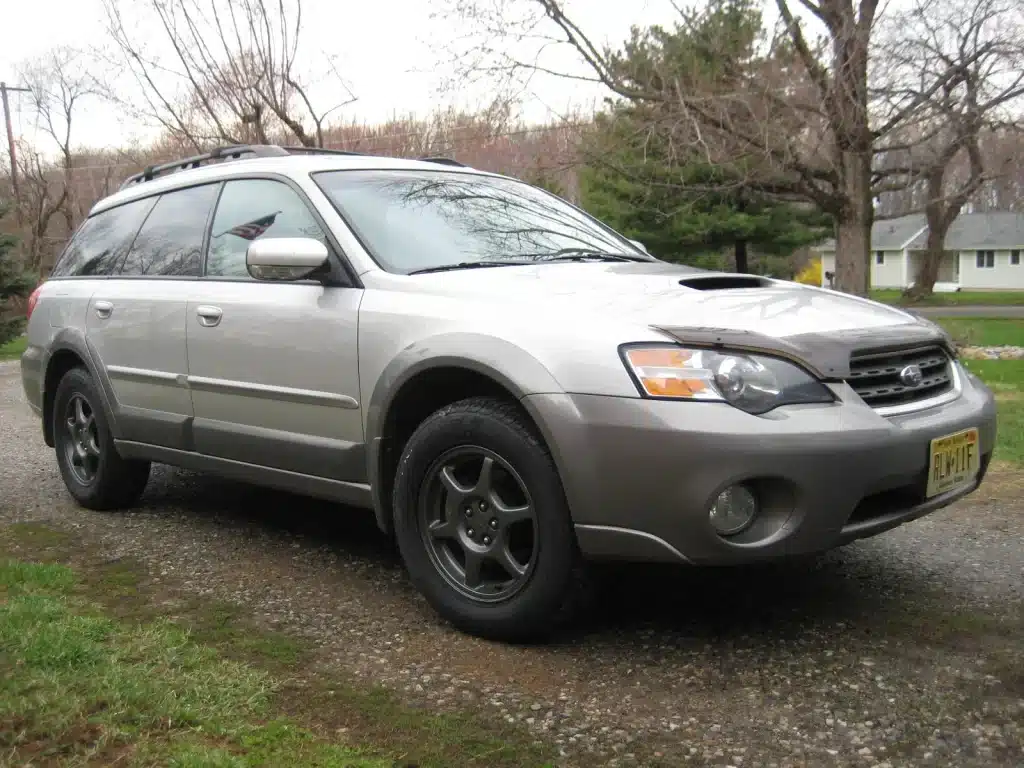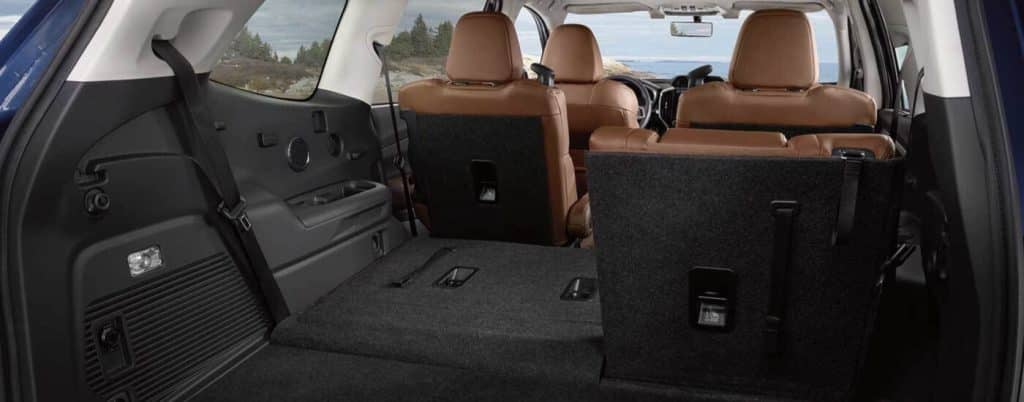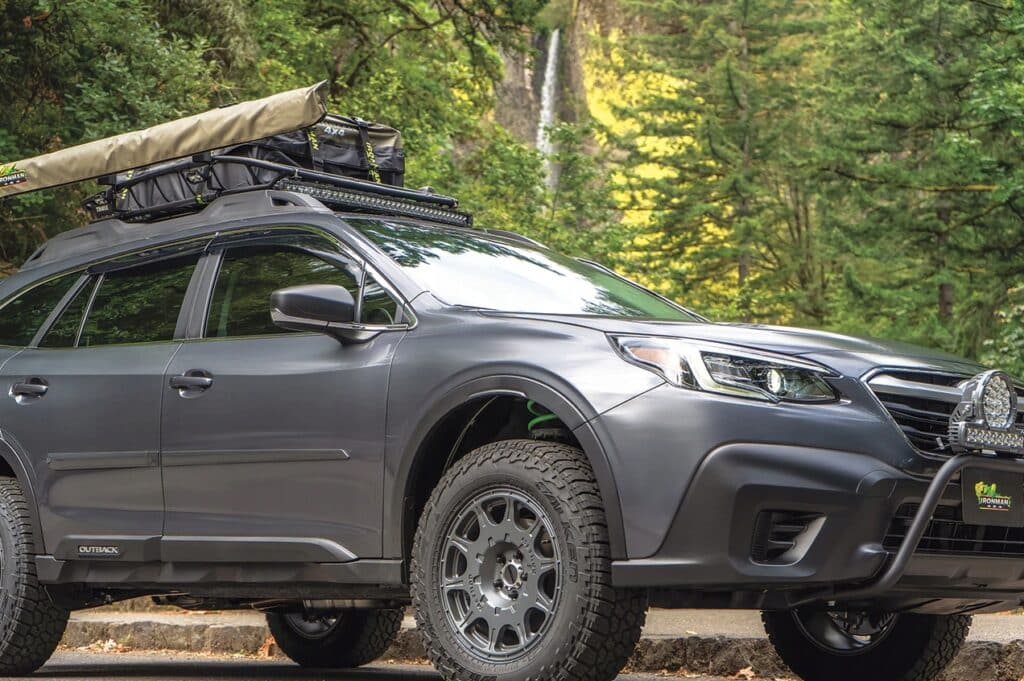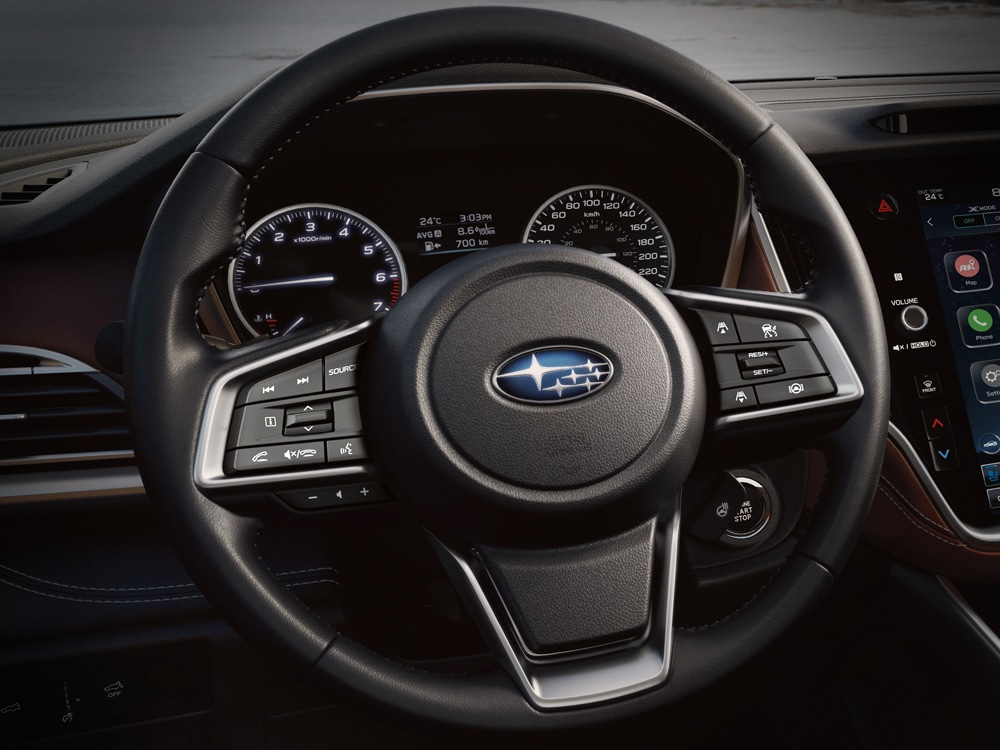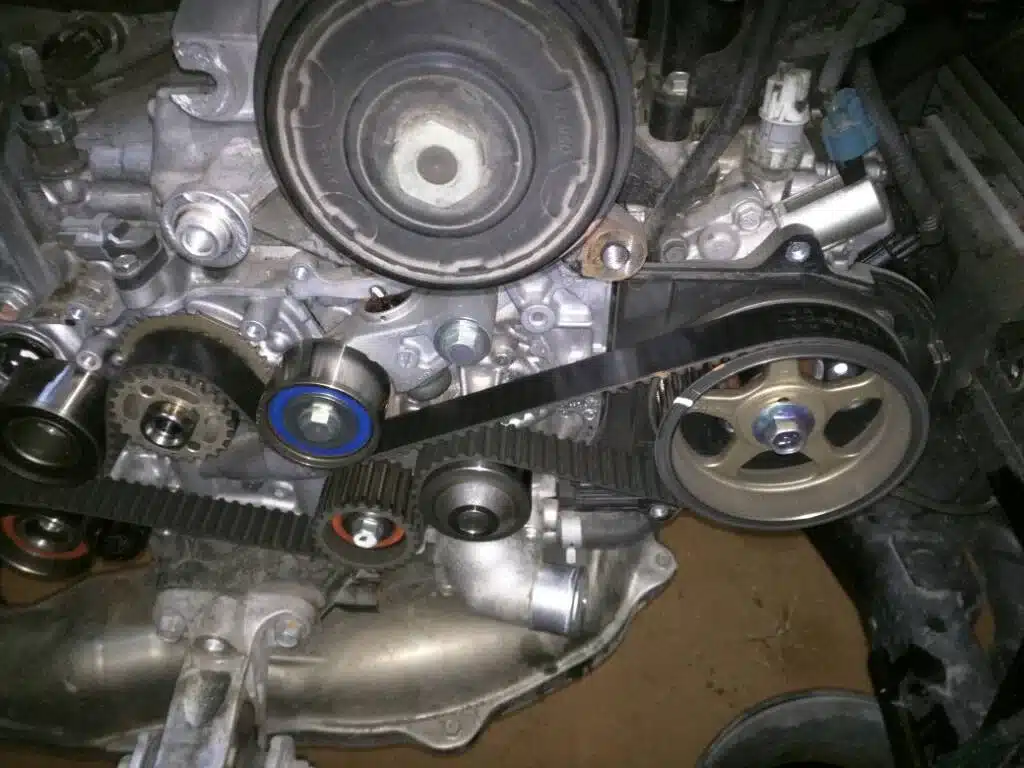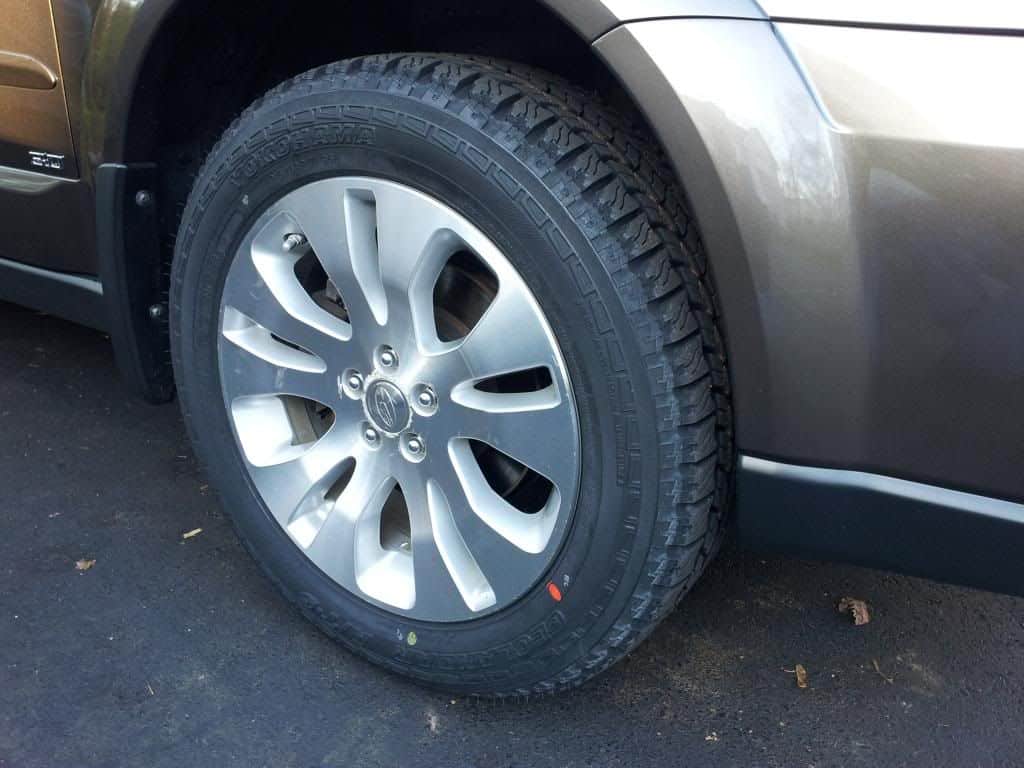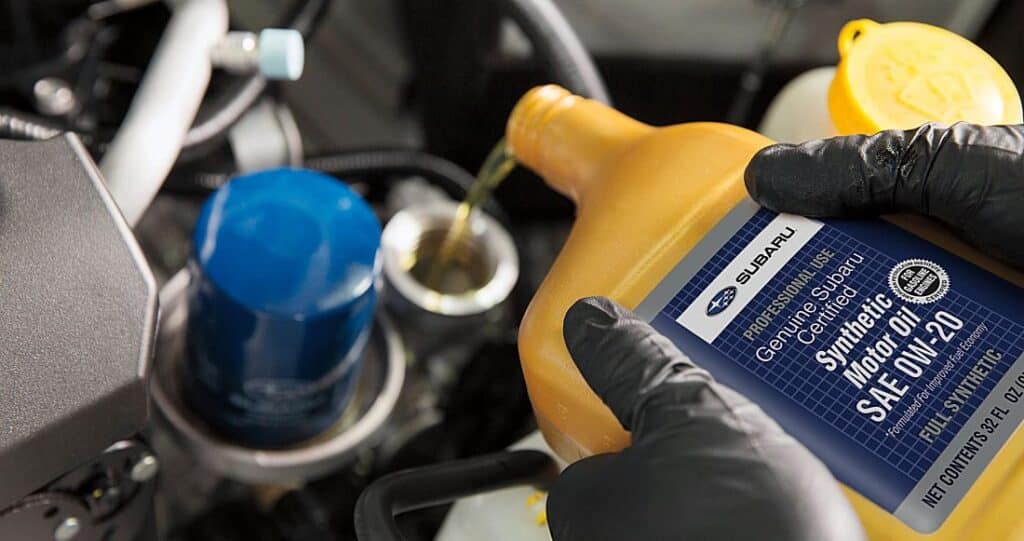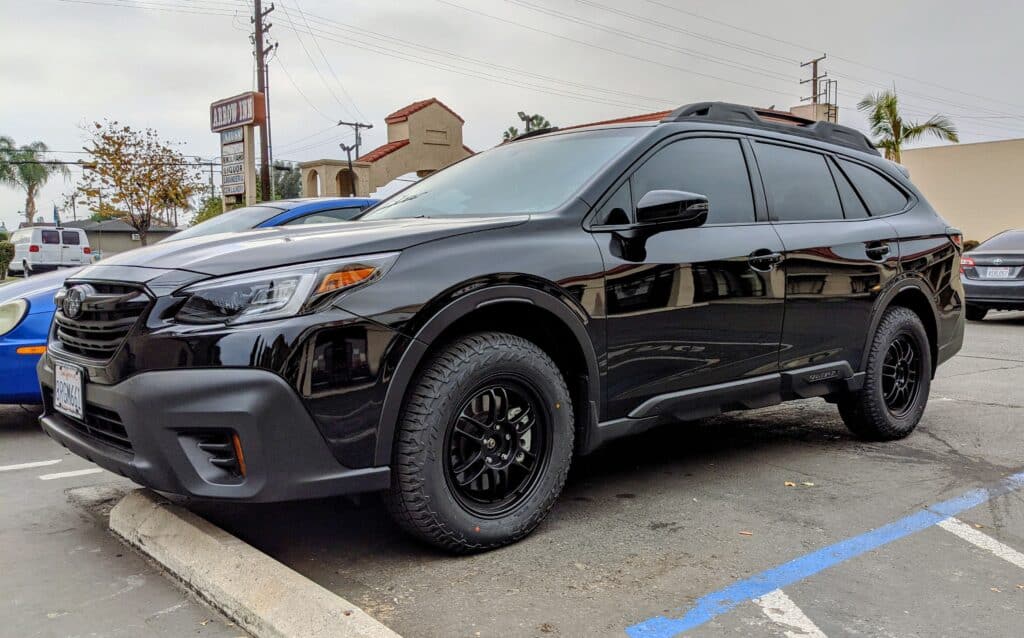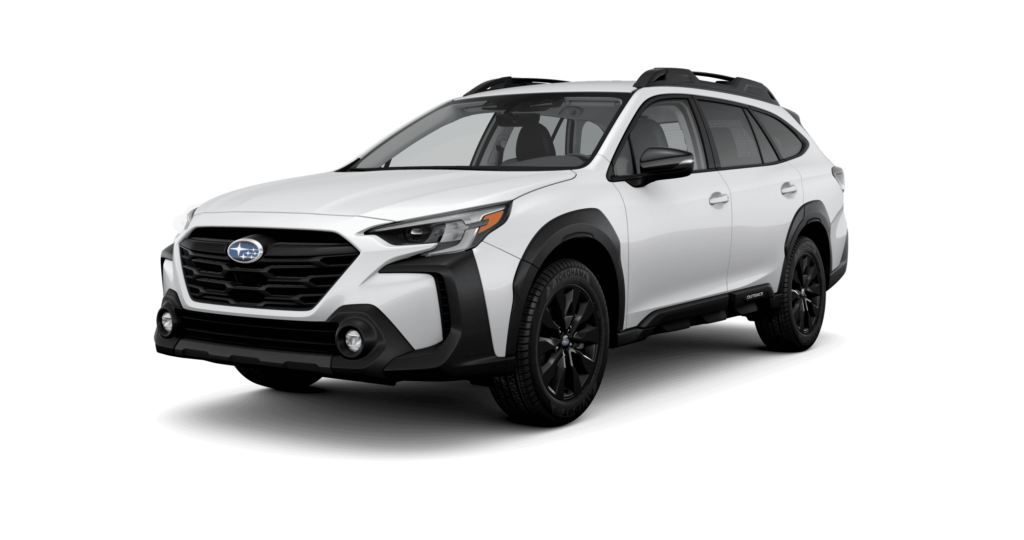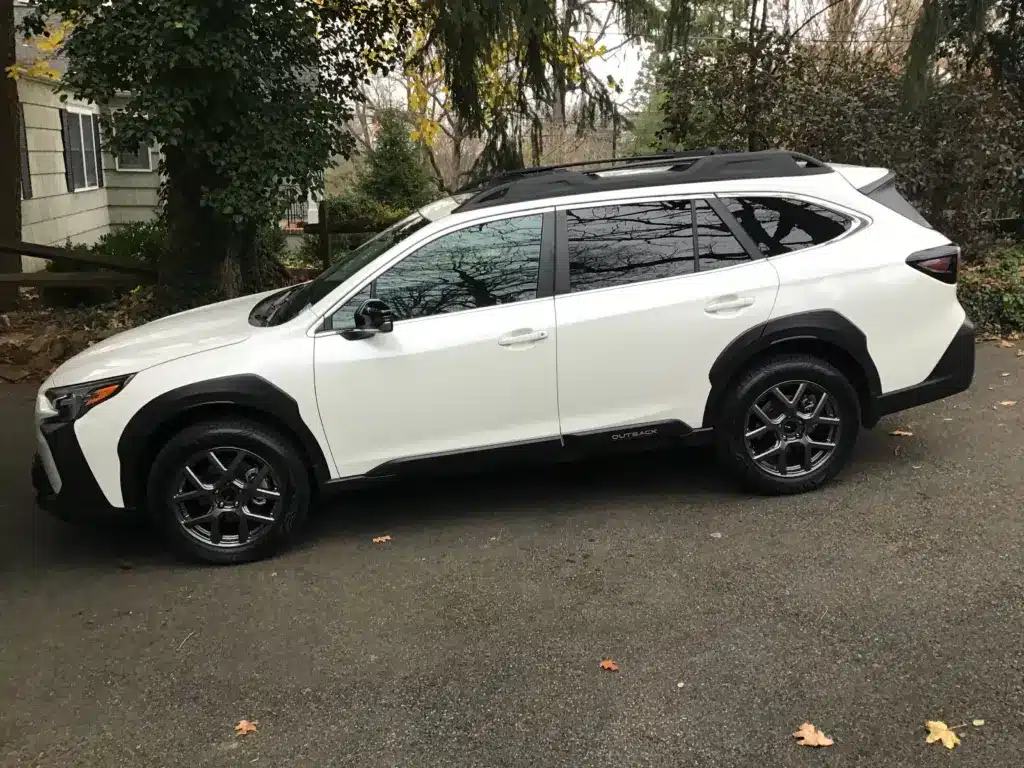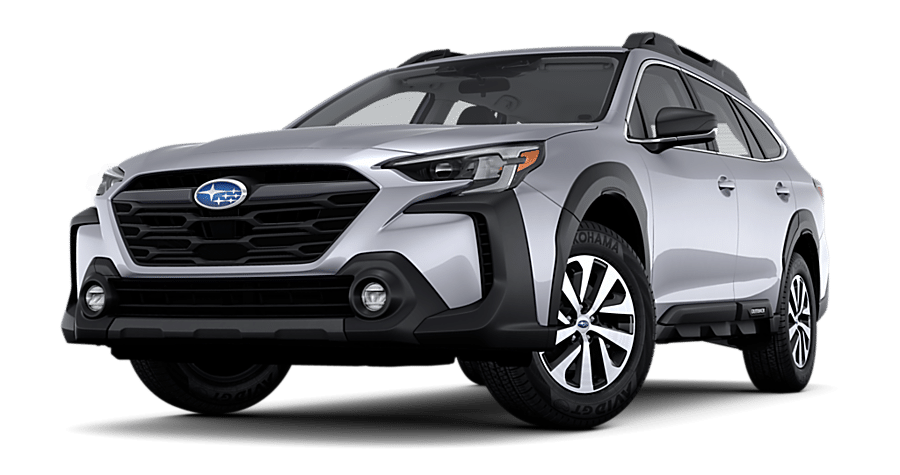| Model | Production Years | Battery Group Number |
|---|---|---|
| Subaru Outback | 2010 – 2019 | 25 (24) |
| Subaru Outback | 2000 – 2009 | 35 |
| Subaru Outback | 2020 – 2021 | 47 |
If you own a Subaru Outback and need to replace its battery, it’s essential to know the right battery group size to ensure optimal performance and fit. After all, different models of Subaru Outback vehicles have required different battery sizes over the years, and you don’t want to end up with a battery that’s incompatible with your beloved car.
Searching for a comprehensive Subaru Outback battery replacement guide or an informative Subaru Outback battery size chart can become an overwhelming task without the right knowledge. Allow me to help streamline this process for you!
Key Takeaways
- Subaru Outbacks use different battery group sizes based on the model year
- 2020 and newer models require a group 47 battery
- 2010-2019 models utilize a group 24 or 25 battery
- 2000-2009 models are compatible with group 35 batteries
- Group sizes correlate with battery dimensions and capacity, directly impacting its fit and function in your vehicle
- A group 24 battery can be a suitable option, offering higher cold-cranking amps (CCA) and reserve capacity (RC)
Understanding Subaru Outback Battery Specifications
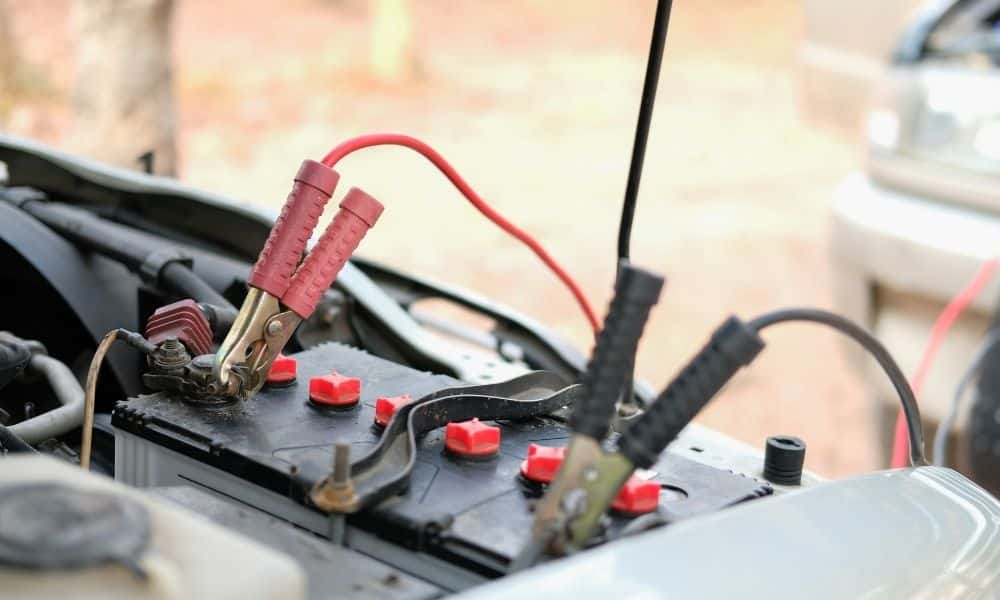
When seeking a suitable battery for Subaru Outback vehicles, understanding the specifications is crucial to finding a high-performing and compatible option.
Battery characteristics include physical dimensions, capacity, and essential performance indicators like amp-hours (Ah), cold-cranking amps (CCA), and reserve capacity (RC). Each battery group size, such as Group 24, Group 27, and Group 34, corresponds to these specs and ensures compatibility with specific Subaru Outback model years.
For optimal performance, the chosen battery should have sufficient Ah to power the vehicle’s electronics, ample CCA for reliable cold starts, and adequate RC to maintain vital functions if the alternator fails.
Keep in mind that battery group sizes are crucial in determining Subaru Outback battery specifications, including dimensions, capacity, and essential performance indicators.
Let’s take a closer look at the standard battery group sizes and their corresponding specifications:
| Group Size | Amp-Hours (Ah) | Subaru Outback Models |
|---|---|---|
| Group 24 | 50-70 Ah | Alternative option for 2010-2019 models |
| Group 27 | 70-90 Ah | Rarely used in Subaru Outback models |
| Group 34 | 90-110 Ah | Not commonly used in Subaru Outback models |
Aside from battery group sizes, it’s essential to consider the specific model year of your Subaru Outback, which directly impacts the required battery specifications. The following list presents the standard battery group sizes for different Subaru Outback model years:
- 2000-2009 models: Group 35
- 2010-2019 models: Group 25 or 24
- 2020 and newer: Group 47
Accurately determining the ideal battery specifications for your Subaru Outback contributes to the overall performance and compatibility of your vehicle while also ensuring optimal functionality in various weather conditions and driving scenarios.
The Evolution of Battery Group Sizes in Subaru Outbacks
Subaru Outback has seen numerous changes and improvements over the years, with battery group sizes being an area of significant evolution.
Subaru Outback Models from 2000-2009
From 2000 to 2009, Subaru Outback models consistently relied on batteries from group size 35. These batteries had dimensions of 9.0625 x 6.9375 x 8.875 inches and featured a positive terminal on the right side.
This ensured a proper fit in the designated compartment and provided consistent power and connectivity to the vehicle’s systems.
- ✅Batter dimensions: 9.06″ L x 6.89″ W x 8.82″ H, Terminal: Tapered terminal (Left negative (-), Right positive (+)). ✅Please ensure to verify the dimensions and terminal position before making a purchase to guarantee compatibility with your vehicle to avoid any fitment issues.
- With a 55AH capacity and 650 cold cranking amps (CCA). Provides reliable performance and long service life, Up to 2 times the cycle life of conventional batteries. If your car’s original battery is an AGM type, you must continue using an AGM battery, as your car will not accept a “downgrade” to a flooded battery. Nominal Voltage:12V. Charging Voltage:14.4~15.0V. Acceptable Charging Current:0~17A. Operating Temperature Range: -22°F~158°F.
- Heat / Cold Resistance: The materials used in the construction of AGM batteries (such as glass fiber mats and specialized separators) have better heat resistance. This allows AGM batteries to maintain their performance and capacity even in the hottest climates, They are also more resistant to extreme temperatures, making them ideal for hot or cold regions.
- Low Self-Discharge: AGM batteries have lower self-discharge rates compared to flooded batteries. Self-discharge refers to the loss of capacity that batteries experience over time when not in use. In hot climates, when the battery may need to be stored for extended periods or not frequently used, AGM batteries can better maintain charge, providing higher voltage output and easier engine start-up in any climate.
- ✅ COMPATIBLE DIMENSIONS & TERMINALS: Battery dimensions: 9.06″ L x 6.89″ W x 8.82″ H, with tapered terminals (Left negative (-), Right positive (+)). Please verify the dimensions and terminal positions before purchase to ensure compatibility with your vehicle and avoid fitment issues.
- ✅ HIGH PERFORMANCE & LONG-LASTING: This 55AH 12V battery delivers 650 cold cranking amps (CCA) for reliable starting power, offering up to twice the cycle life of traditional flooded batteries. Nominal Voltage: 12V, Charging Voltage: 14.4-15.0V, and acceptable charging current: 0-17A. Operating temperature range: -22°F to 158°F.
- ✅ EXCEPTIONAL HEAT/COLD RESISTANCE: AGM batteries are designed with advanced materials like glass fiber mats and specialized separators for superior heat and cold resistance. They maintain optimal performance even in extreme temperatures, making them ideal for use in both hot and cold climates.
- ✅ LOW SELF-DISCHARGE & ENHANCED SAFETY: With a low self-discharge rate, our AGM battery holds its charge better over time, ensuring quicker starts, even after long periods of inactivity. Plus, AGM batteries are safer than flooded batteries, reducing the risk of acid leaks, spills, and corrosion. They’re also more durable, lasting 2-3 times longer than flooded alternatives and are safer to handle.
- Fast Starting Power: This 12V 55Ah 650 CCA delivers strong, steady starts is ready for any weather in any season.
- Made to Last: With its 100-minute Reserve Capacity supports longer run times and a longer overall battery lifespan.
- All Power, No Mess AGM Design: Sealed and spill-proof, the MM-G35 is built with high discharge output and deep discharge recovery to keep power steady when it counts.
- Strength That Starts on the Inside: The rugged construction resists shock, vibration, and harsh conditions, delivering reliable performance across a wide range of temperatures and tough environments.
Updates in Battery Group Size for Models from 2010-2019
From 2010 to 2019, Subaru Outback models underwent a transition in battery group sizes, moving from group 35 to group 25.
While these batteries retained the same physical dimensions as their predecessors (9.0625 x 6.9375 x 8.875 inches), the location of the positive terminal shifted to the left side. This update in battery group size catered to the evolving electrical demands of modern vehicle systems and performance enhancements.
- OUTRAGEOUSLY DEPENDABLE: The Interstate MT series delivers reliable battery life and enhanced performance in hot to moderate climates for an affordable price. This battery delivers 550 Cold cranking amps (CCA) and has 100 minutes of reserve capacity
- GROUP SIZE 25 CAR BATTERY: This battery fits over 550 different year/make/model car batteries! Please confirm if this battery fits your vehicle with Amazon’s Confirmed Fit Tool at the top of this page
- OUR “BETTER” FLOODED, NON-AGM CAR BATTERY: MT-25 offers longest life in hot to moderate climates due to a high electrolyte-to-lead ratio that resists extreme temperatures. This conventional flooded battery delivers 25-30 cycles at 80% depth of discharge
- MOST TRUSTWORTHY POWER SOURCE: Since 1952, Interstate Batteries purpose has been to deliver the most Outrageously Dependable source of power to the world. Our customers come first, so we strive to create a positive experience for all. We recycle more batteries than we sell; please return to an Interstate All Battery Center near you so we can continue recycling
I recently switched out my battery with a group 24. Going for it gives you a higher CCA and good reserve capacity for the same price as group 25, and it fits perfectly in the tray. It’s also easier to find.
- ✅Batter dimensions: 10.75″ L x 6.81″ W x 8.98″ H, Terminal: Tapered terminal (Left negative (-), Right positive (+)). ✅Please ensure to verify the dimensions and terminal position before making a purchase to guarantee compatibility with your vehicle to avoid any fitment issues.
- With a 70AH capacity and 710 cold cranking amps (CCA). Provides reliable performance and long service life, Up to 2 times the cycle life of conventional batteries. If your car’s original battery is an AGM type, you must continue using an AGM battery, as your car will not accept a “downgrade” to a flooded battery. Nominal Voltage:12V. Charging Voltage:14.4~15.0V. Acceptable Charging Current:0~21A. Operating Temperature Range: -22°F~158°F.
- Heat / Cold Resistance: The materials used in the construction of AGM batteries (such as glass fiber mats and specialized separators) have better heat resistance. This allows AGM batteries to maintain their performance and capacity even in the hottest climates, They are also more resistant to extreme temperatures, making them ideal for hot or cold regions.
- Low Self-Discharge: AGM batteries have lower self-discharge rates compared to flooded batteries. Self-discharge refers to the loss of capacity that batteries experience over time when not in use. In hot climates, when the battery may need to be stored for extended periods or not frequently used, AGM batteries can better maintain charge, providing higher voltage output and easier engine start-up in any climate.
- Battery dimensions — BCI Group Size 24(Replace Group size 34), 10.87 x 6.61 x 6.89 inches, Terminal Layout: Left: + Right: -. Battery dimensions, cold cranking amps, terminal location and battery type are key factors in getting the right unit. Please measure your old battery and compare the size with this battery, if the measurements are the same, the positive and negative positions are the same, there is not much difference in CCA and it will fit your vehicle.
- DESIGNED FOR VEHICLES WITH START-STOP — International standard size BCI Group 24F/ 34 , easy to install.Ideal for vehicles with large electrical loads (DVD players, navigation systems, heated seats, power doors, etc.), vehicles used for frequent short trips or in stop-n-go traffic and vehicles that sit unused for days or weeks at a time.
- 4 TIMES EXTRA CYCLING — High density negative paste and Enhanced life alloy or Silver Calcium stamped alloy.Uplus Start and Stop AGM battery has 4 times extra cycle life compared to standard conventional batteries.
- DEEP-CYCLE AND CRANKING POWER — Calcium lead positive grid, maximizes conductivity and allows for low resistance.Highest cold cranking amperes (650CCA) for engine starts, even reliable during cold winter temperatures.
- ✅ COMPATIBLE DIMENSIONS & TERMINALS: Battery dimensions: 10.75″ L x 6.81″ W x 8.89″ H, with tapered terminals (Left negative (-), Right positive (+)). Please verify the dimensions and terminal positions before purchase to ensure compatibility with your vehicle and avoid fitment issues.
- ✅ HIGH PERFORMANCE & LONG-LASTING: This 70AH 12V battery delivers 710 cold cranking amps (CCA) for reliable starting power, offering up to twice the cycle life of traditional flooded batteries. Nominal Voltage: 12V, Charging Voltage: 14.4-15.0V, and acceptable charging current: 0-17A. Operating temperature range: -22°F to 158°F.
- ✅ EXCEPTIONAL HEAT/COLD RESISTANCE: AGM batteries are designed with advanced materials like glass fiber mats and specialized separators for superior heat and cold resistance. They maintain optimal performance even in extreme temperatures, making them ideal for use in both hot and cold climates.
- ✅ LOW SELF-DISCHARGE & ENHANCED SAFETY: With a low self-discharge rate, our AGM battery holds its charge better over time, ensuring quicker starts, even after long periods of inactivity. Plus, AGM batteries are safer than flooded batteries, reducing the risk of acid leaks, spills, and corrosion. They’re also more durable, lasting 2-3 times longer than flooded alternatives and are safer to handle.
The Latest Subaru Outback Models from 2020 and Beyond
Subaru Outback models from 2020 onwards have adopted the Group 47 battery, slightly modifying dimensions to 9.5625 x 6.9375 x 7.5 inches and repositioning the positive terminal back on the right side. This change signifies a response to the latest design adjustments and requirements for contemporary vehicle electronics and engine systems.
“As vehicle technologies evolve and driving needs change, the battery requirements for different models throughout the years have shifted accordingly. Proper installation and selection, in alignment with the manufacturer’s guidelines, are essential for safe and efficient operation of your Subaru Outback.”
Understanding these changes in battery group sizes for Subaru Outback models provides better guidance when selecting the appropriate battery. For a quick overview, the table below summarizes the primary battery groups and compatibility for various Subaru Outback model years:
- ✅Batter dimensions: 9.52″ L x 6.89″ W x 7.48″ H, Terminal: Tapered terminal (Left negative (-), Right positive (+)). ✅Please ensure to verify the dimensions and terminal position before making a purchase to guarantee compatibility with your vehicle to avoid any fitment issues.
- 100RC rating: Provides reliable performance and long service life, Up to 2 times the cycle life of conventional batteries.Nominal Voltage:12V, Capacity: 60 Ah. CCA: 680A, Self Discharge:
- 60AH capacity: Delivers consistent power over time, Cycles more, and recharges faster than conventional batteries.
- 680 CCA: Ensures quick and reliable starting power.Delivers superior starting power in cold weather, and resists internal corrosion from heat.
- ✅ COMPATIBLE DIMENSIONS & TERMINALS: Battery dimensions: 9.57″ L x 6.89″ W x 7.48″ H, with tapered terminals (Left negative (-), Right positive (+)). Please verify the dimensions and terminal positions before purchase to ensure compatibility with your vehicle and avoid fitment issues.
- ✅ HIGH PERFORMANCE & LONG-LASTING: This 60AH 12V battery delivers 680 cold cranking amps (CCA) for reliable starting power, offering up to twice the cycle life of traditional flooded batteries. Nominal Voltage: 12V, Charging Voltage: 14.4-15.0V, and acceptable charging current: 0-17A. Operating temperature range: -22°F to 158°F.
- ✅ EXCEPTIONAL HEAT/COLD RESISTANCE: AGM batteries are designed with advanced materials like glass fiber mats and specialized separators for superior heat and cold resistance. They maintain optimal performance even in extreme temperatures, making them ideal for use in both hot and cold climates.
- ✅ LOW SELF-DISCHARGE & ENHANCED SAFETY: With a low self-discharge rate, our AGM battery holds its charge better over time, ensuring quicker starts, even after long periods of inactivity. Plus, AGM batteries are safer than flooded batteries, reducing the risk of acid leaks, spills, and corrosion. They’re also more durable, lasting 2-3 times longer than flooded alternatives and are safer to handle.
| Model Years | Battery Group Size | Dimensions (L x W x H) | Positive Terminal Location |
|---|---|---|---|
| 2000-2009 | Group 35 | 9.0625 x 6.9375 x 8.875 inches | Right |
| 2010-2019 | Group 25 | 9.0625 x 6.9375 x 8.875 inches | Left |
| 2020 and Beyond | Group 47 | 9.5625 x 6.9375 x 7.5 inches | Right |
By considering the essential information outlined in this section, you can make an informed decision when selecting an appropriate battery for your Subaru Outback. Always consult the manufacturer’s guide or reliable sources to confirm accurate battery sizes and compatibility.
Key Factors to Consider When Selecting Your Subaru Outback Battery
When choosing a battery for your Subaru Outback, there are several factors to consider beyond just the group size. Focusing on these essential elements will help ensure a safe and efficient battery installation while optimizing your vehicle’s overall performance.
The key considerations for Subaru Outback battery selection are the type of battery, voltage capacity, cold-cranking amps (CCA), reserve capacity (RC), and compatibility with the manufacturer’s recommended specifications.
“Selecting the right battery for your Subaru Outback directly impacts the longevity, safety, and performance of your vehicle’s electrical system.”
Here is a list of essential factors to consider when choosing the best battery for your Subaru Outback:
- Battery Type (Wet or Dry Cell)
- Voltage Capacity (Amp-Hours)
- Cold-Cranking Amps (CCA)
- Reserve Capacity (RC)
- Manufacturer’s Recommended Specifications
When comparing different battery options, take into account the voltage capacity and performance ratings, such as amp-hours (Ah), cold-cranking amps (CCA), and reserve capacity (RC).
Choosing a battery with the right Ah rating ensures your vehicle’s electrical needs are met without over or under capacity, CCA helps your battery perform efficiently in cold temperatures, and RC indicates the duration the battery can power essential systems if the charging system fails.
| Battery Type | Voltage Capacity (Ah) | Cold-Cranking Amps (CCA) | Reserve Capacity (RC) |
|---|---|---|---|
| Wet Cell | 50-110 | 550-850 | 80-180 |
| Dry Cell | 50-120 | 625-900 | 90-190 |
Wet cell batteries typically cost less upfront but require more maintenance, while dry cell batteries are more expensive initially, providing longer life and less maintenance. To ensure a proper fit and safe operation, double-check that the battery suits your specific Subaru Outback model by referring to the manufacturer’s recommended specifications.
Considering these factors, you will be better equipped to decide on the optimal battery selection for your Subaru Outback. Pairing your vehicle with the right battery will facilitate a seamless installation process, extend the life of your battery, and enhance the performance of your Subaru Outback’s electrical system.
Conclusion: Ensuring Compatibility and Performance
Finding the right Subaru Outback battery group size is critical for compatibility and performance. As our driving needs and vehicle technology have evolved over the years, so have the battery requirements for different Subaru Outback models.
Ensuring proper installation and selection is key to maintaining safe and efficient operation of your Subaru Outback.
Whether maintaining an older model or updating a newer one, identifying the correct battery group size ensures seamless integration with the vehicle’s electrical system.
Remember to consider important factors beyond group size, such as Ah ratings, CCA ratings, and RC ratings, as well as wet and dry cell types for your Subaru Outback battery.
By taking all of these elements into account, you can make a more informed decision and ensure that your Subaru Outback battery is equipped to handle its electrical requirements and perform effectively in various conditions.
FAQ
What are the different Subaru Outback battery group sizes based on model years?
For Subaru Outbacks, the battery group sizes vary as follows: 2020 and newer models use a group 47 battery, 2010-2019 models utilize a group 25 battery, and 2000-2009 models are compatible with group 35 batteries.
What are the key specifications to consider when selecting a battery for my Subaru Outback?
Key specifications include the battery’s amp-hours (Ah), cold-cranking amps (CCA), reserve capacity (RC), dimensions, and compatibility for your specific model year.
How do battery group sizes relate to dimensions and performance?
Battery group sizes correlate with their physical dimensions and capacity, impacting how the battery fits in the vehicle and performs regarding power output, cold starting capabilities, and reserve power.
What does a battery’s Ah rating indicate?
A battery’s Ah (amp-hour) rating indicates its capacity to deliver electrical current over a set period. The Ah should be sufficient to power the vehicle’s electronics and support its electrical requirements.
How important is the rating of cold-cranking amps (CCA) for a Subaru Outback battery?
The CCA rating is crucial because it measures the battery’s ability to start an engine in cold temperatures. A battery with a high CCA rating will be more reliable for starting your Subaru Outback in colder climates.
How can I ensure I select the correct Subaru Outback battery group size?
It’s crucial to follow the manufacturer’s guide. Proper installation and selection are essential for the safe and efficient operation of your Subaru Outback.
Last update on 2026-01-07 / Affiliate links / Images from Amazon Product Advertising API



